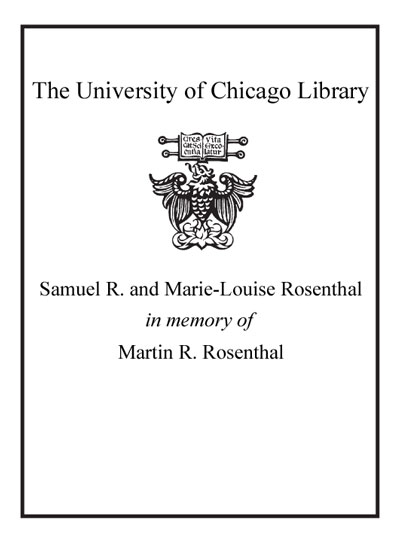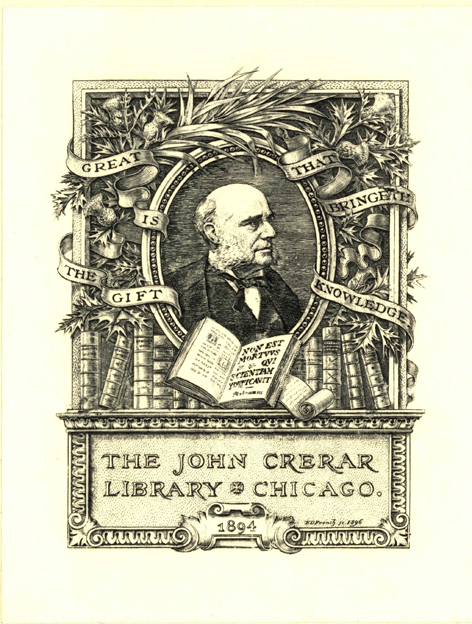Nonlinear optics /
Saved in:
| Author / Creator: | Boyd, Robert W., 1948- |
|---|---|
| Edition: | 3rd ed. |
| Imprint: | Burlington, MA : Academic Press, c2008. |
| Description: | xix, 613 p. : ill. ; 24 cm. |
| Language: | English |
| Subject: | |
| Format: | E-Resource Print Book |
| URL for this record: | http://pi.lib.uchicago.edu/1001/cat/bib/7097351 |
Table of Contents:
- Preface to the Third Edition
- Preface to the Second Edition
- Preface to the First Edition
- 1. The Nonlinear Optical Susceptibility
- 1.1. Introduction to Nonlinear Optics
- 1.2. Descriptions of Nonlinear Optical Processes
- 1.3. Formal Definition of the Nonlinear Susceptibility
- 1.4. Nonlinear Susceptibility of a Classical Anharmonic Oscillator
- 1.5. Properties of the Nonlinear Susceptibility
- 1.6. Time-Domain Description of Optical Nonlinearities
- 1.7. Kramers-Kronig Relations in Linear and Nonlinear Optics
- Problems
- References
- 2. Wave-Equation Description of Nonlinear Optical Interactions
- 2.1. The Wave Equation for Nonlinear Optical Media
- 2.2. The Coupled-Wave Equations for Sum-Frequency Generation
- 2.3. Phase Matching
- 2.4. Quasi-Phase-Matching
- 2.5. The Manley-Rowe Relations
- 2.6. Sum-Frequency Generation
- 2.7. Second-Harmonic Generation
- 2.8. Difference-Frequency Generation and Parametric Amplification
- 2.9. Optical Parametric Oscillators
- 2.10. Nonlinear Optical Interactions with Focused Gaussian Beams
- 2.11. Nonlinear Optics at an Interface
- Problems
- References
- 3. Quantum-Mechanical Theory of the Nonlinear Optical Susceptibility
- 3.1. Introduction
- 3.2. Schrodinger Calculation of Nonlinear Optical Susceptibility
- 3.3. Density Matrix Formulation of Quantum Mechanics
- 3.4. Perturbation Solution of the Density Matrix Equation of Motion
- 3.5. Density Matrix Calculation of the Linear Susceptibility
- 3.6. Density Matrix Calculation of the Second-Order Susceptibility
- 3.7. Density Matrix Calculation of the Third-Order Susceptibility
- 3.8. Electromagnetically Induced Transparency
- 3.9. Local-Field Corrections to the Nonlinear Optical Susceptibility
- Problems
- References
- 4. The Intensity-Dependent Refractive Index
- 4.1. Descriptions of the Intensity-Dependent Refractive Index
- 4.2. Tensor Nature of the Third-Order Susceptibility
- 4.3. Nonresonant Electronic Nonlinearities
- 4.4. Nonlinearities Due to Molecular Orientation
- 4.5. Thermal Nonlinear Optical Effects
- 4.6. Semiconductor Nonlinearities
- 4.7. Concluding Remarks
- References
- 5. Molecular Origin of the Nonlinear Optical Response
- 5.1. Nonlinear Susceptibilities Calculated Using Time-Independent Perturbation Theory
- 5.2. Semiempirical Models of the Nonlinear Optical Susceptibility
- Model of Boling, Glass, and Owyoung
- 5.3. Nonlinear Optical Properties of Conjugated Polymers
- 5.4. Bond-Charge Model of Nonlinear Optical Properties
- 5.5. Nonlinear Optics of Chiral Media
- 5.6. Nonlinear Optics of Liquid Crystals
- Problems
- References
- 6. Nonlinear Optics in the Two-Level Approximation
- 6.1. Introduction
- 6.2. Density Matrix Equations of Motion for a Two-Level Atom
- 6.3. Steady-State Response of a Two-Level Atom to a Monochromatic Field
- 6.4. Optical Bloch Equations
- 6.5. Rabi Oscillations and Dressed Atomic States
- 6.6. Optical Wave Mixing in Two-Level Systems
- Problems
- References
- 7. Processes Resulting from the Intensity-Dependent Refractive Index
- 7.1. Self-Focusing of Light and Other Self-Action Effects
- 7.2. Optical Phase Conjugation
- 7.3. Optical Bistability and Optical Switching
- 7.4. Two-Beam Coupling
- 7.5. Pulse Propagation and Temporal Solitons
- Problems
- References
- 8. Spontaneous Light Scattering and Acoustooptics
- 8.1. Features of Spontaneous Light Scattering
- 8.2. Microscopic Theory of Light Scattering
- 8.3. Thermodynamic Theory of Scalar Light Scattering
- 8.4. Acoustooptics
- Problems
- References
- 9. Stimulated Brillouin and Stimulated Rayleigh Scattering
- 9.1. Stimulated Scattering Processes
- 9.2. Electrostriction
- 9.3. Stimulated Brillouin Scattering (Induced by Electrostriction)
- 9.4. Phase Conjugation by Stimulated Brillouin Scattering
- 9.5. Stimulated Brillouin Scattering in Gases
- 9.6. Stimulated Brillouin and Stimulated Rayleigh Scattering
- Problems
- References
- 10. Stimulated Raman Scattering and Stimulated Rayleigh-Wing Scattering
- 10.1. The Spontaneous Raman Effect
- 10.2. Spontaneous versus Stimulated Raman Scattering
- 10.3. Stimulated Raman Scattering Described by the Nonlinear Polarization
- 10.4. Stokes-Anti-Stokes Coupling in Stimulated Raman Scattering
- 10.5. Coherent Anti-Stokes Raman Scattering
- 10.6. Stimulated Rayleigh-Wing Scattering
- Problems
- References
- 11. The Electrooptic and Photorefractive Effects
- 11.1. Introduction to the Electrooptic Effect
- 11.2. Linear Electrooptic Effect
- 11.3. Electrooptic Modulators
- 11.4. Introduction to the Photorefractive Effect
- 11.5. Photorefractive Equations of Kukhtarev et al.
- 11.6. Two-Beam Coupling in Photorefractive Materials
- 11.7. Four-Wave Mixing in Photorefractive Materials
- Problems
- References
- 12. Optically Induced Damage and Multiphoton Absorption
- 12.1. Introduction to Optical Damage
- 12.2. Avalanche-Breakdown Model
- 12.3. Influence of Laser Pulse Duration
- 12.4. Direct Photoionization
- 12.5. Multiphoton Absorption and Multiphoton Ionization
- Problems
- References
- 13. Ultrafast and Intense-Field Nonlinear Optics
- 13.1. Introduction
- 13.2. Ultrashort Pulse Propagation Equation
- 13.3. Interpretation of the Ultrashort-Pulse Propagation Equation
- 13.4. Intense-Field Nonlinear Optics
- 13.5. Motion of a Free Electron in a Laser Field
- 13.6. High-Harmonic Generation
- 13.7. Nonlinear Optics of Plasmas and Relativistic Nonlinear Optics
- 13.8. Nonlinear Quantum Electrodynamics
- Problem
- References
- Appendices
- A. The SI System of Units
- Further reading
- B. The Gaussian System of Units
- Further reading
- C. Systems of Units in Nonlinear Optics
- D. Relationship between Intensity and Field Strength
- E. Physical Constants
- Index


